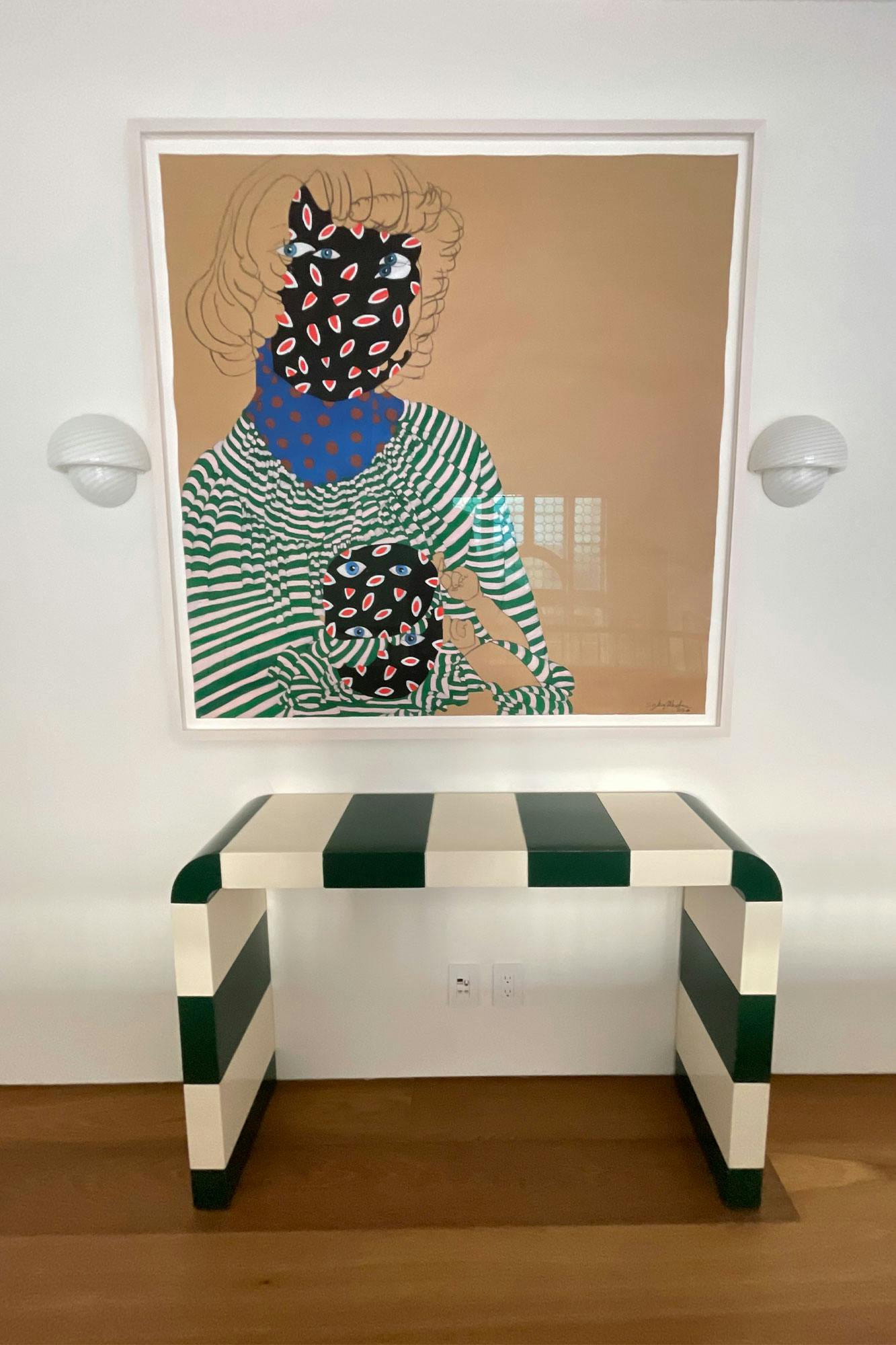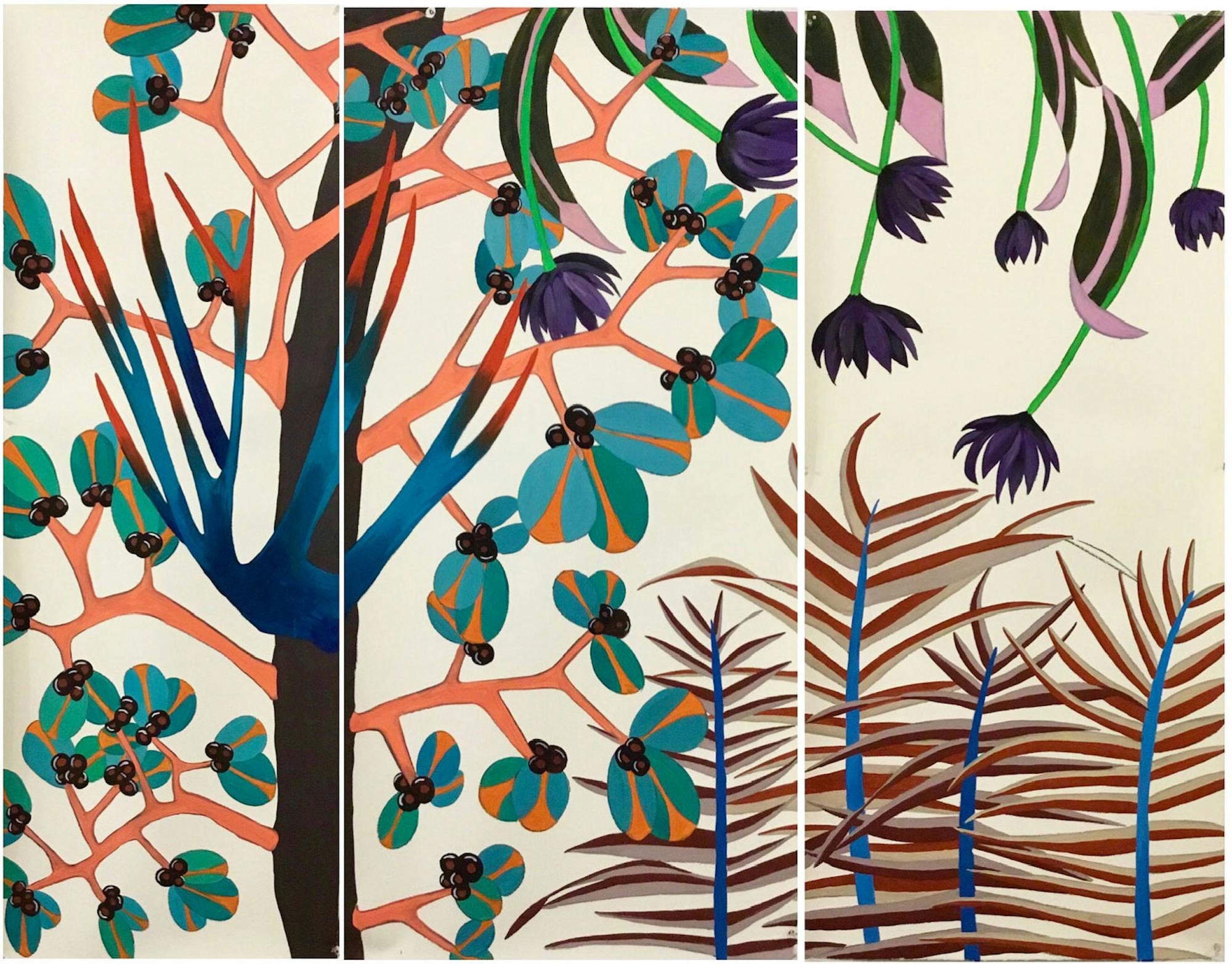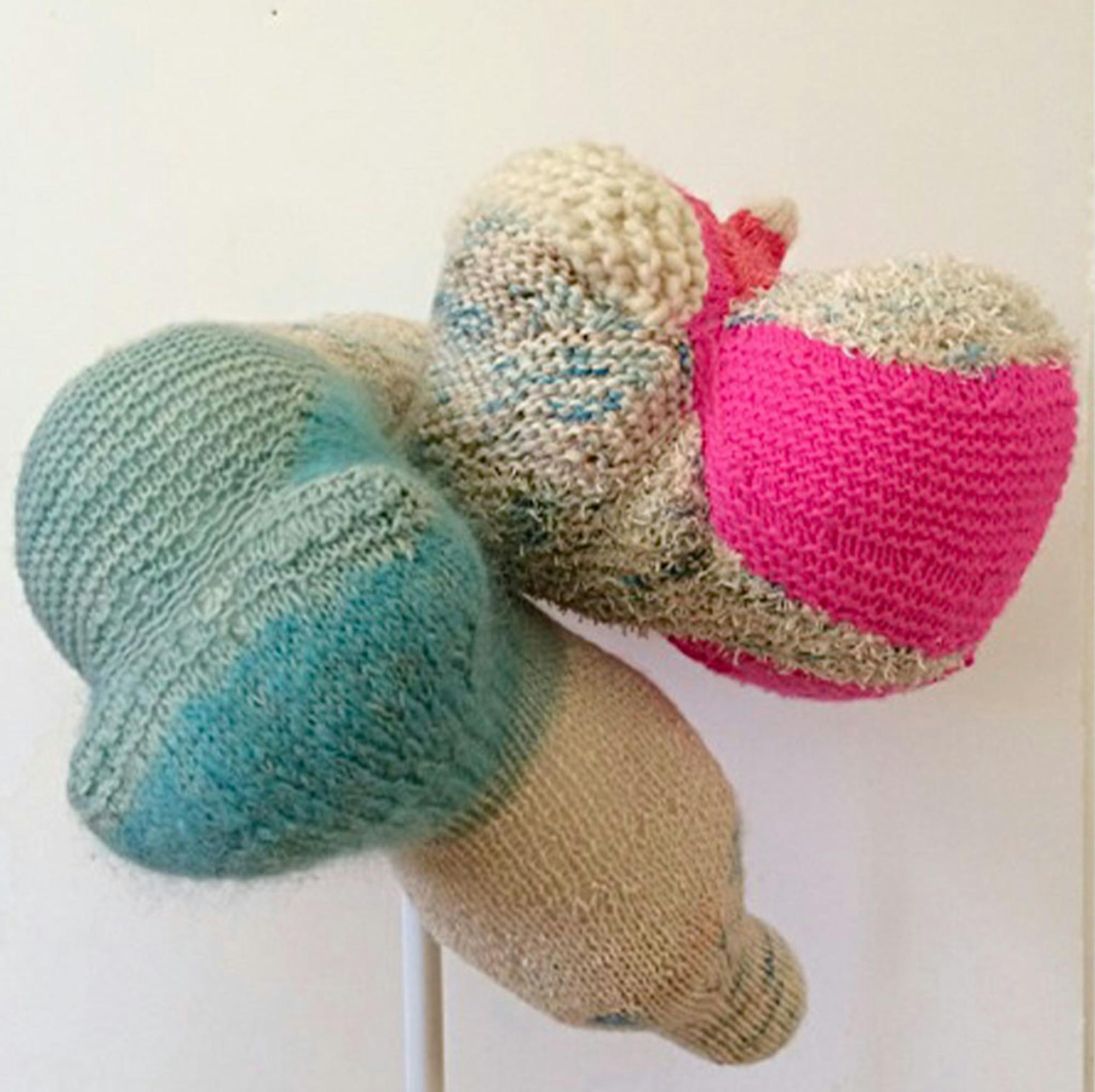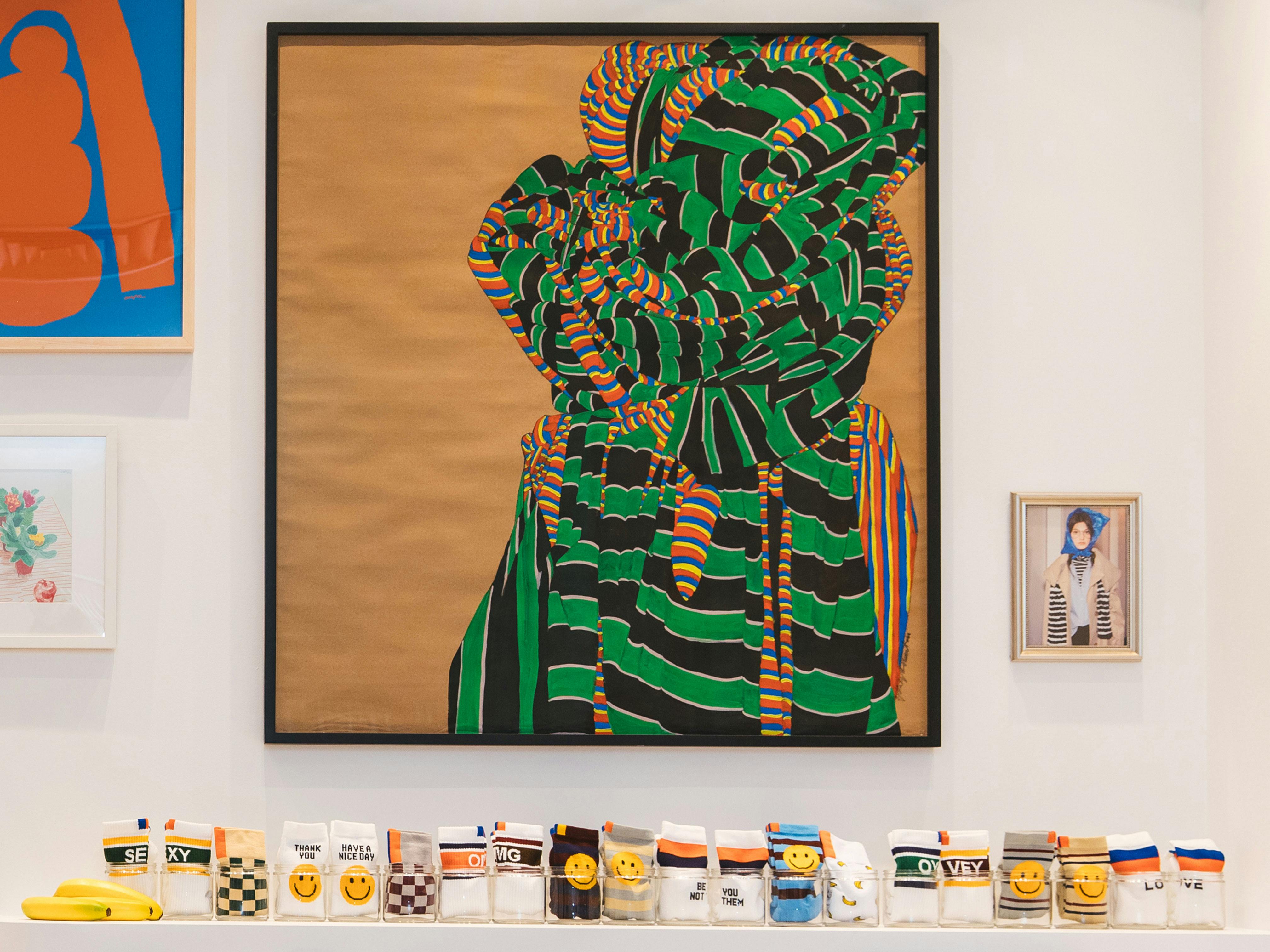I was introduced to Sydney Albertini’s work through Nikki, who has both been a fan and collector of Sydney’s work for several years. Sydney’s art is a beautiful representation of movement, emotion, and nature. I was initially drawn to her oil on paper work, covered in striped-covered colorful fabric renderings. The movement and body of the fabric felt human-like. When one of Sydney’s works was hung on a wall at KULE’s Rockefeller Center store, passerby were transfixed, too. The movement and energy in her paintings hold you, kind of like a KULE sweater 😉 and so I asked Sydney to chat. It is one of the most inspiring and enjoyable conversations I’ve had, even beyond when we talked about stripes. What I personally connected with, is her desire to express both fast and sharp and slow and meditative thoughts and actions, which she does through her work and the practice we discuss. We go on to chat about her artistic practices, inspirations, and why baking bread is basically edible artwork. – Elizabeth
Where do you live and where do you work? Where are you originally from? How has this impacted your art?
I live and work in Amagansett, NY, where I’ve been for 17 years. I am originally from Paris, born to a French father and American mother. Living with two cultures — French and American — laid the groundwork for two styles of art and two means of expression that are in many ways opposed. My father was a psychiatrist and my mother was a model, which is also quite opposite.
How did you find yourself in New York?
After getting my International Bachelorette, I did 1 year of preparatory art school. The director of my school urged me to study art at Parsons during which I also did a year in Florence studying Fresco and Renaissance. That really laid the seed for all the colors and storytelling in my work. I stayed in New York after Parsons, and eventually moved out to Amagansett to be by nature, especially the ocean. I have to be by the ocean. I dream of it being right outside my window. It’s also important to be near it because I surf and love the community that it comes with. I paddle out in the ocean to be greeted with beauty. Even when it’s cloudy, it is absolutely gorgeous. It takes your entire mind away.

Did you always know you’d be an artist?
I never really asked myself what to do, it just happened. At one point I thought about being a psychiatrist, which I mentioned my dad was, because I love human communication and the way humans act. I happen to have a lot of energy, so I also toyed with the idea of being a dancer.
I was in Senegal a lot from the time I was 17 to 20 and I discovered a whole community of tribal art and dancing. I was very overwhelmed and inspired by that experience. I became interested in patterns with a specific language. Those that tell where you’re at in your community or your field, for example. The patterns that are the revelation of a person or moment.

Do you use photography as a way to remember these experiences to take back to your studio?
Mostly the images are just ingrained in mind. It’s not about representing something that’s real. The patterns in my art are all made up. Like my botanical pieces, specifically, are completely made up. They’re an impression. I invent the color combinations.
Can you describe your botanical pieces?
The botanical pieces are about joy and aesthetics. They’re a panorama of colors. They’re about creating beauty. Nature is a mysterious beauty and I like to take it home and make it my own.

I also do movement pieces which are all about energy. They are more emotional. The piece at the KULE store is a movement piece.
There is some overlap in the botanical and movement pieces. That’s actually an ongoing project I am working on now.
The work of yours of which I am familiar is on paper, is a lot your work on paper?
Most of my paintings are oil on paper. A small percentage is on canvas, but only if the canvas has been used several times. I have apprehension in front of canvas. Paper is much freer and can be cut and manipulated to your desired size. Paper isn’t demanding.
My practice is generally that I will do my big drawings with charcoal, right on the spot. They are always large. The size of the piece must be adequate to my body and movement. The piece at the KULE store is one of my smaller ones. I generally do single panels that are 4×4 ft. I do diptychs that are up to 21 panels. I did a diptych that was 21 panels for a show at The French Institute in NYC. Most of my shows have up to 4 panels. There is a wallpaper element with these large scale pieces. You get wrapped up in the folds and movement.

I know you also do textile work, which is evident even in your paintings. What do you make?
I am interested in how textiles have been and are used in Tribal and Folk art. I adore Folk art. It is so moving in the way in which it tells a story. This art is the appearance of reality: it takes something that’s real and turn it into something else.
Where do you make most of your work?
I have a dry studio and I have a wet studio, both in my home. The dry one is where I do my textile work: the weaving, embroidery, and knits. I enjoy these “women’s crafts” and I enjoy turning them into 2D or 3D. Most of my sculpture is soft sculpture, some is wood. I have imposed a rule on myself where nothing can be discarded, so bits and pieces of old work is found in the new. Each body of work gives into the next body, quite literally.
I do one of these projects per year, usually embroidery, weaving, or knitting. I’ll do bits of it in small increments. I love that I can travel with it. It’s like a diary and comes with me.

How do you separate the two — the “wet” and the “dry” practicecs, other than with physical studios?
The fiber works are more psychological and intellectual. They’re more meditative. I work my way through these pieces asking myself questions and bringing solutions. The fiber works are more psychological and intellectual. They’re more meditative. I work my way through these pieces asking myself questions and bringing solutions.
There is a different energy between my wet and dry studios and I must have both. I work up close and really meticulously over long periods of time with the pieces I make in my dry studio, otherwise known as my 2D/3D pieces. In my wet studio where I make my large-scale paintings, my work is made mostly in a single week of crazy intense work.
All of these works together are a complete diary of my reality, especially because I live and work in the same space. There are pockets of my work all over the house. My three boys always knew not to touch them. They knew to simply never touch that pile of yarn or the sketch on the table.
Something about the way you explain your process reminds me of cooking, do you cook?
I love to cook but am a terrible recipe follower. I love to bake bread, which is a great way of making something from scratch. I recently made a really delicious buckwheat seaweed bread! It doesn’t have to be complicated. They make bread in the middle of the desert. If it feels right it’s right.
